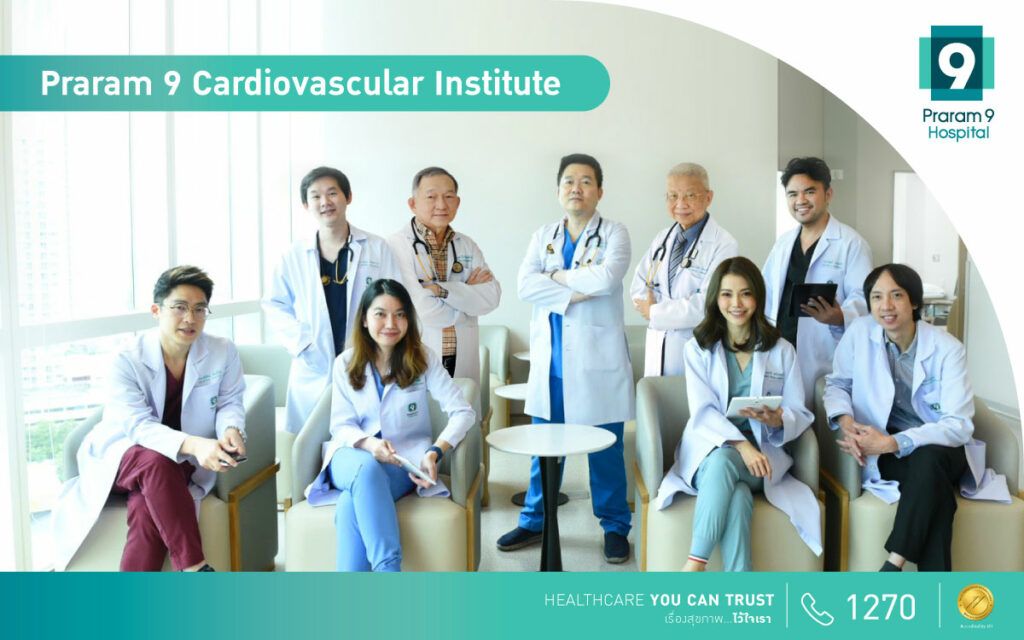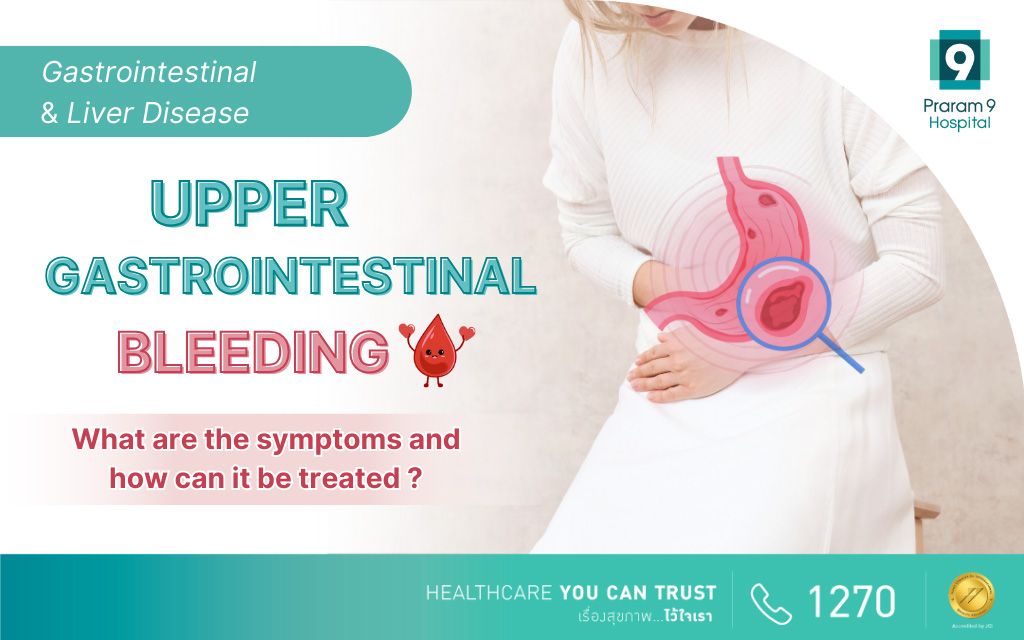Health Articles
Knowledge
Cardiac Arrhythmia : A warning sign that may lead to heart failure

The heart is an essential organ that works tirelessly all the time. On average, the heart beats around 100,000 times a day. Nowadays, heart disease is becoming increasingly common and close to us. We often hear news of people we know, or those close to us, passing away due to heart disease, or instances of athletes collapsing during competitions caused by irregular heartbeats.
Cardiac arrhythmia is considered a type of heart disease that is frequently mentioned today. An irregular heartbeat causes abnormal heart contractions. If severe and left untreated, it can lead to heart failure. Therefore, taking care of heart health is extremely important and should not be neglected.
Table of contents
- What is Cardiac Arrhythmia?
- Symptoms of Cardiac Arrhythmia
- Causes of Irregular Heartbeat
- How Dangerous is an Irregular Heartbeat?
- Diagnosing Cardiac Arrhythmia
- Treatment of Cardiac Arrhythmia
- Preventing Cardiac Arrhythmia
- Heart Screening Package
- Conclusion
What is Cardiac Arrhythmia?
When we are at rest, the heart typically beats 60-100 times per minute with a regular rhythm. Under normal conditions, the heart rate may exceed 100 beats per minute during activities like exercise, excitement, or shock, and it may fall below 60 beats per minute while sleeping, meditating, etc.
Cardiac arrhythmia is a condition where the heart beats irregularly (normal being 60-100 beats per minute). It can be classified into three types:
Bradycardia
The heart rate is less than 60 beats per minute.
Tachycardia
The heart rate exceeds 100 beats per minute.
Irregular Rhythm
The heart beats inconsistently, with pauses, skips, or alternating between fast and slow beats.
Symptoms of Cardiac Arrhythmia
- Palpitations: Feeling of a rapid, fluttering, or pounding heartbeat.
- Fatigue: Feeling unusually tired or weak.
- Chest Pain: Possible tightness or discomfort in the chest.
- Shortness of Breath: Difficulty breathing or rapid breathing.
- Fainting or Dizziness: Sudden loss of consciousness or feeling lightheaded.
Causes of Irregular Heartbeat
The causes of cardiac arrhythmia can vary among patients depending on their underlying conditions and individual risk factors. Key causes include:
- Heart and Vascular Diseases:
- Hypertension (high blood pressure)
- Coronary artery disease
- Hypertrophic cardiomyopathy (abnormal thickening of the heart muscle)
- Congenital heart defects
- Heart valve stenosis or regurgitation
- Thyrotoxicosis: Overactive thyroid (hyperthyroidism).
- Obstructive Sleep Apnea (OSA): Snoring and stopping breathing during sleep.
- Electrolyte Imbalance: Imbalance of minerals in the body.
- Caffeine Consumption: Intake of caffeinated beverages such as tea, coffee, soda, or energy drinks.
- Alcohol Consumption: Drinking alcoholic beverages.
- Certain Medications:
- Cold medications containing pseudoephedrine
- Weight loss drugs containing sibutramine
- Illegal Drugs: Substances containing amphetamines.
- Genetics: Family history of arrhythmias.
- Stress: High levels of stress.
How Dangerous is an Irregular Heartbeat?
Cardiac arrhythmias can be classified into severe and nonsevere types.
- Severe Arrhythmias: These can cause sudden death and are often found in patients with existing heart conditions. Patients in this category require close medical supervision.
- Non-Severe Arrhythmias: While not life-threatening, these can still impact daily life. Symptoms such as palpitations or fainting during activities like working or driving can lead to accidents. Additionally, some patients may develop blood clots in the heart, increasing the risk of stroke.
If left untreated, cardiac arrhythmia can lead to heart failure. Therefore, if you suspect you have symptoms of an irregular heartbeat, it is crucial to consult a doctor for appropriate treatment.
Diagnosing Cardiac Arrhythmia
- Medical History: Gathering information on underlying conditions, alcohol consumption, drug use, weight loss medications, and intake of caffeinated beverages like tea, coffee, or soda.
- Electrocardiogram (EKG): Measuring electrical activity of the heart during symptoms.
- Holter Monitoring: Continuous recording of the heart’s electrical activity for 1-2 days, suitable for patients with frequent, brief symptoms.
- Exercise Stress Test (EST): Evaluating heart rhythm during exercise to identify arrhythmias triggered by physical activity.
- Echocardiogram: Using ultrasound to assess heart structure and function, which may be related to arrhythmia.
- Cardiac Electrophysiology Study: Inserting catheters into the heart to check for abnormal electrical circuits, performed in a cardiac catheterization lab. This is used when other tests do not detect the arrhythmia.
Treatment of Cardiac Arrhythmia
The treatment for cardiac arrhythmia varies based on the type and severity of the condition. A cardiologist will determine the most appropriate treatment for each patient. The treatment options include:
- Medications: To control the heart’s rhythm.
- Cardioversion: Using electric shocks to restore normal heart rhythm.
- Pacemaker: An implanted device to regulate the heart’s rhythm.
- Ablation Therapy: Using radiofrequency waves to destroy abnormal electrical circuits in the heart. This is often combined with a cardiac electrophysiology study.
- Automated Implantable Cardioverter-Defibrillator (AICD): A device implanted under the skin of the chest that continuously monitors heart signals. It delivers electric shocks to correct dangerous rapid heart rhythms and can also stimulate the heart if it beats too slowly.
Preventing Cardiac Arrhythmia
- Balanced Diet: Eat a well-rounded diet with all five food groups.
- Avoid Stimulants: Limit intake of heart-stimulating foods and drinks such as excessive tea, coffee, and alcohol.
- Regular Exercise: Engage in consistent and regular physical activity.
- Reduce Heart and Vascular Risk Factors: Manage risk factors for cardiovascular diseases.
- Adequate Rest: Ensure sufficient and quality sleep.
- Regular Health Check-ups: Undergo annual health screenings.
- Manage Existing Conditions: Follow up regularly with a doctor if you have any chronic conditions.
Heart Screening Package
Cardiovascular disease is an important disease in every country around the world. This is because it is the most common cause of death. In Thailand, too, the incidence of cardiovascular disease has been increasing steadily. It was also found to be the most common cause of death.

Praram 9 Hospital has realized this importance and has opened the Praram 9 Hospital Institute of Cardiovascular Center to provide services to patients in this area all along. In order to be ready in terms of providing complete and efficient services, Praram 9 Hospital has developed and strengthened the service to patients with cardiovascular disease by increasing the capacity of personnel.
9 Healthy Heart Screening Packages
Price Starting from : 6,900 - 8,900 THB
For more information, please contact
TEL: 1270 (Local) or +662 202 9999
You can consult a doctor from anywhere through video calls.
Conclusion
Cardiac arrhythmia is a type of heart disease that, if severe, can lead to sudden death. Even less severe forms can impact daily functioning and potentially cause complications like stroke.
If you suspect you have symptoms of cardiac arrhythmia, it is essential to consult a doctor for proper diagnosis and treatment to prevent serious complications, such as heart failure or other dangerous conditions.














